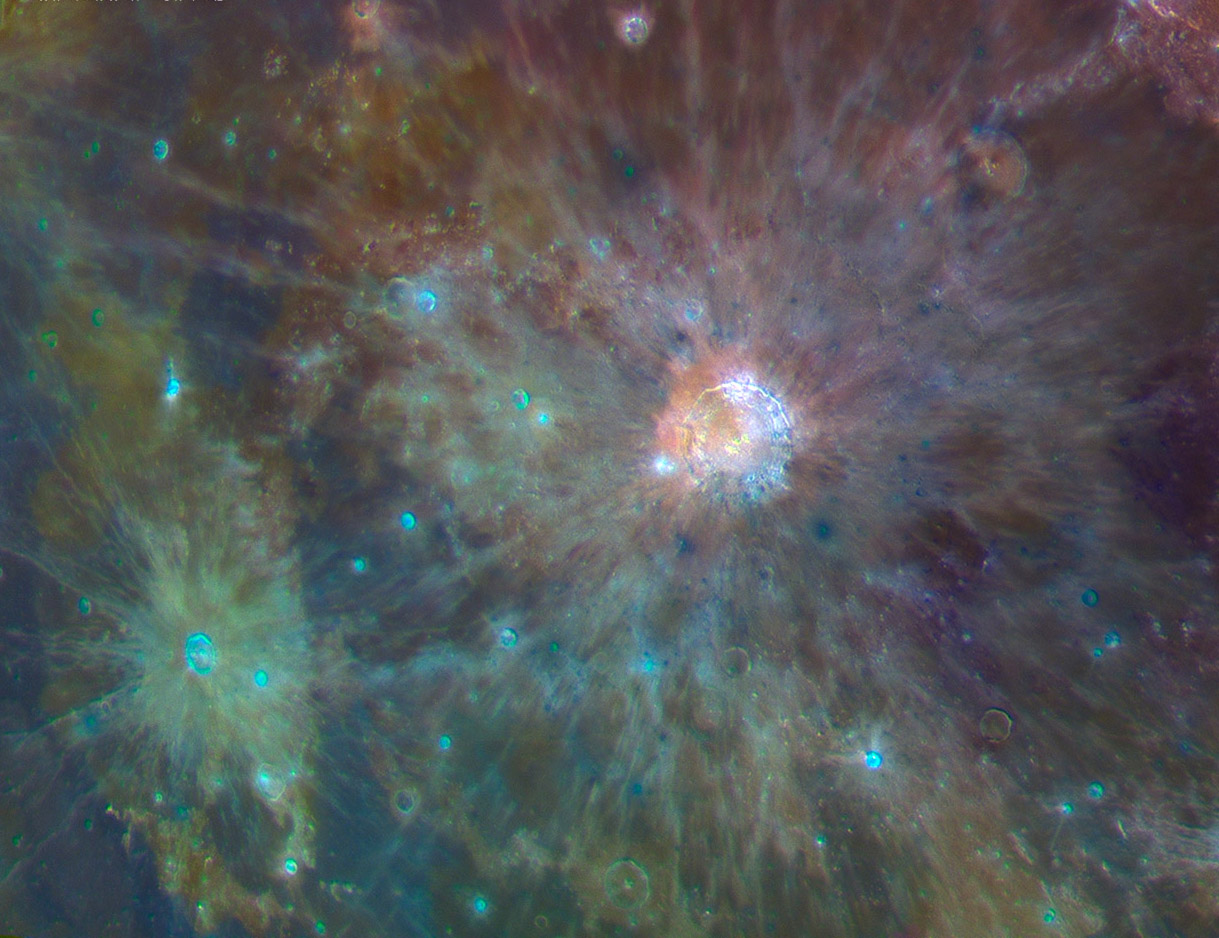January 24, 2009
Compelling Copernican Color

image by " rel="nofollow Yuri Goryachko, Mikhail Abgarian, Konstantin Morozov, Minsk, Belarus
If you squint your eyes and look at this from a distance it could be a Hubble Space Telescope image of a star-studded nebula. But it's better than that - it's our Moon with bright Copernicus at right-center. This " rel="nofollow false color image greatly enhances subtle color differences to differentiate soils and rocks of different compositions. The bright blue represents relatively freshly exposed surfaces of the inner walls of young impact craters. Copernicus is rimmed by a pink halo of impact melt rocks. This is an older and more degraded version of the dark impact melt halo surrounding Tycho. The northwest quadrant of the floor of Copernicus is coated by melt, and the halo is also brightest on that side, suggesting that melt was preferentially sent in that direction. Such concentrations of melt are often due to oblique impacts. And if you look at it's rays you will notice that there are somewhat fewer toward the southeast. Copernicus may have been formed by a low angle projectile coming from the southeast. This image repays detailed examination - notice the dark halo craters, the purple hue of Imbrium ejecta southeast of Copernicus, and why is the Copernicus ejecta on the upper left half of the image pink but its not on the opposite half?
" rel="nofollow Chuck Wood
Technical Details
13th January, 2009 23:30UT. Maksutov-Cassegrain Santel D=230mm F=3000mm + Unibrain Fire-i 702 CCD b/w camera (IEEE-1394, 1388x1040, 10fps, 12bit) + UV (Optec Bessel U, 340-395nm), Astronomik Green, and Astronomik Planet IR Pro (IR-pass 807nm+) filters; Registax & Avistack. LRGB (L=IR, R=IR, G=G, B=UV). Seeing 4/10, Trans 4/5
Related Links
Rükl plate 31
Minsk Miracle Imagers " rel="nofollow website and larger view of this image.



